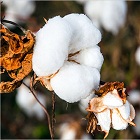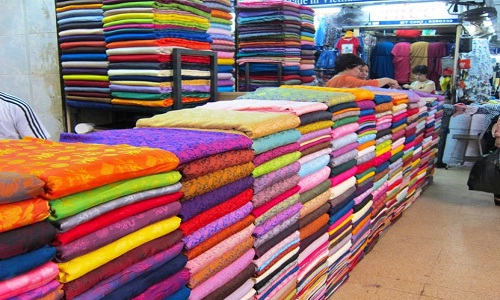"Vietnam’s demand for raw cotton has seen an upsurge for six consecutive years, with August-to-January (Marketing YTD) imports at their highest levels ever. This is a positive sign for US cotton exports, as American cotton has made up about 40 per cent of Vietnam’s cotton imports over the last three years. US exports of cotton have made up about 50 per cent of Vietnam’s imports to date, suggesting even greater market share than in the past."

Vietnam’s demand for raw cotton has seen an upsurge for six consecutive years, with August-to-January (Marketing YTD) imports at their highest levels ever. This is a positive sign for US cotton exports, as American cotton has made up about 40 per cent of Vietnam’s cotton imports over the last three years. US exports of cotton have made up about 50 per cent of Vietnam’s imports to date, suggesting even greater market share than in the past.
FDIs into Vietnam

Much of Vietnam’s growth in recent years has been driven by a decline in cotton spinning in China. China’s now ended cotton price support program required that the state reserve purchase large amounts of cotton, which drove up cotton prices in China relative to global levels. Due to this uncompetitive pricing, a wave of FDI flowed into Vietnam’s spinning sector.
With ASEAN-China Free Trade Agreement, Vietnam-produced cotton yarn has duty free access to China, versus a 40 per cent above-quota duty on raw cotton imported into China. Many Chinese-owned mills relocated to Vietnam, spinning the same yarn using the same (mostly US) cotton, then shipping the yarn to China for the next stage in the value chain. About half to two-thirds of Vietnam’s cotton imports are spun in foreign-owned mills, with much of it exported to China.
Impact on the US
Given the United States’ pre-eminent position in Vietnamese cotton sector, any decline in Vietnam’s spinning would negatively impact US exports. Additionally, when US exporters were shut out of China by its initial policy moves, they were mostly able to shift to other markets, especially Vietnam, as spinning moved there. But if demand in Vietnam dried up as a result of reserve auction sales in China, there would be no new spinning transferred to markets where US cotton could compete for business. US exports would have been replaced by releases from China’s state reserves.
Factors driving Vietnam’s spinning
There are several reasons for Vietnam’s growth relative to India and Pakistan. Both India and Pakistan have faced crop shortfalls and tighter stocks in the last year, which led to comparatively high internal prices even as China’s domestic prices were becoming more competitive. Another key factor driving Vietnam’s growth may be the China-ASEAN Free Trade Agreement, which began to come into effect in 2010. With full implementation of provisions related to cotton and yarn implemented fairly rapidly, China’s customs duty on yarn imported from Vietnam, or from any ASEAN country, is zero.
Some other ASEAN countries such as Indonesia also recorded a rise in yarn exports to China, while yarn exports from major non-ASEAN countries such as Uzbekistan and South Korea saw a decline. If duty-free access for yarn is driving increased spinning in Vietnam, then the China-ASEAN Free Trade Agreement could be pushing US cotton exports higher. Yarn spinning being shifted from producer-countries like India, Pakistan, Uzbekistan, and to an extent China, into duty preferred importer countries like Vietnam bodes well for US exports. Because the China-ASEAN Free Trade Agreement does not require that raw cotton inputs be sourced within the area, US exporters are able to derive an indirect benefit from China’s duty-free ASEAN access.












